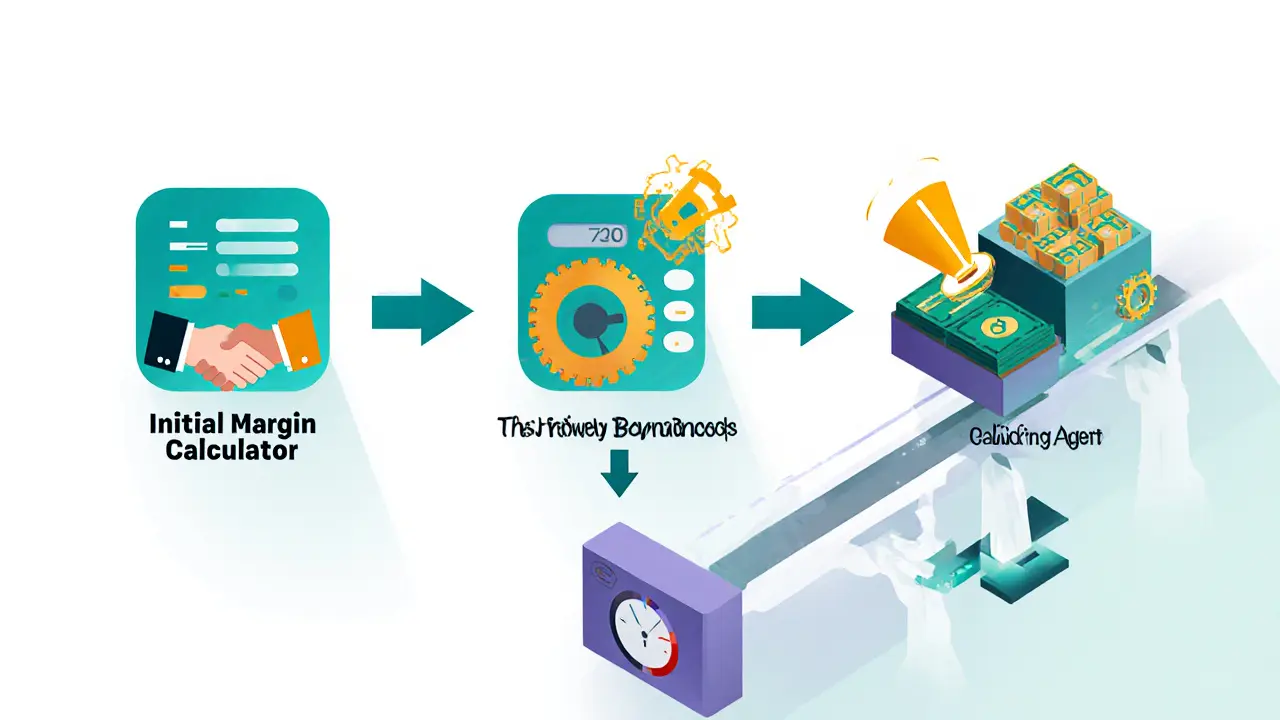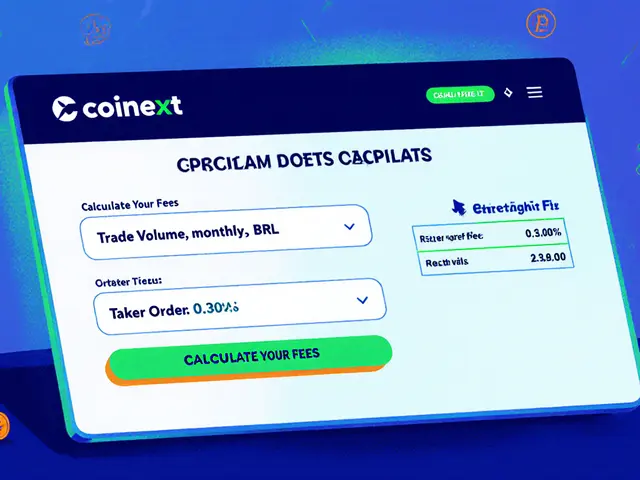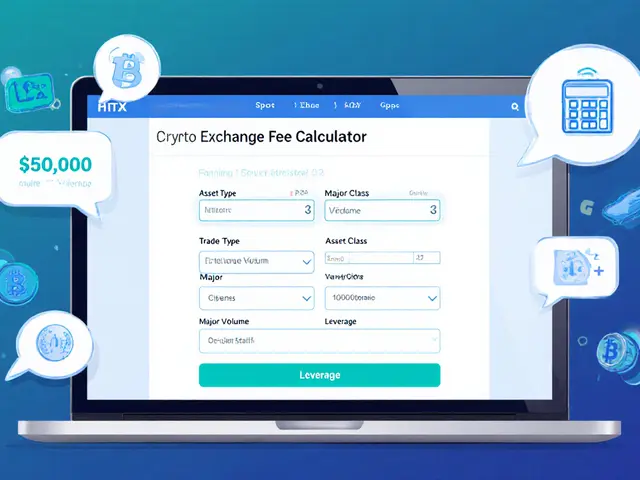- Home
- ::
- Collateral Risk Management: A Practical Guide for Financial Professionals

Collateral Risk Management: A Practical Guide for Financial Professionals
Collateral Risk Management Calculator
Margin Calculation Results
Initial Margin: $0
Variation Margin (Daily): $0
Haircut Applied: 0%
Net Collateral Value: $0
Quick Take
- Collateral risk management uses pledged assets to guard against credit defaults.
- Key pieces are initial margin, variation margin, and haircuts.
- Automation, AI, and blockchain are reshaping how firms value and move collateral.
- Regulators demand strict reporting, capital ratios, and valuation standards.
- A solid optimization plan cuts costs while keeping liquidity on hand.
What Is Collateral Risk Management?
When institutions need to protect themselves from default, Collateral Risk Management is the practice of using pledged assets to limit credit exposure and ensure repayment. The idea is simple: if borrower A can’t pay, lender B can seize a pre‑agreed asset-cash, government bonds, or high‑grade corporate securities-to cover the loss. Though the concept dates back centuries, modern markets have turned it into a sophisticated, data‑driven engine that sits at the heart of banks, hedge funds, pension plans, and corporate treasuries.
Core Components: Collateral, Margin, and Haircuts
Three building blocks keep the system functional.
- Collateral is the actual asset pledged-cash, Treasury bills, or equities-that backs a credit exposure.
- Margin refers to the cash or securities required to cover potential losses. It’s split into initial margin (the upfront buffer) and variation margin (the day‑to‑day adjustment).
- Haircut is a percentage reduction applied to the market value of collateral to reflect liquidity risk and credit quality.
For example, a $10million Treasury bond might receive a 2% haircut, meaning only $9.8million counts toward margin requirements. The haircut protects the lender if market prices dip or if the bond becomes harder to sell.
How the Process Works: Mark‑to‑Market, Initial & Variation Margin
Every derivative or repo contract is marked‑to‑market (MtM) daily. If the market moves against PartyA, the MtM value drops, and PartyB must post additional collateral to restore the agreed‑upon exposure level. This extra posting is the variation margin.
At contract inception, both parties calculate the initial margin based on volatility, notional size, and the credit rating of the counter‑party. The calculation follows regulatory formulas such as the Basel III Standardised Approach or the ICE ISDA SIMM model, depending on the jurisdiction.
The flow typically looks like this:
- Trade is executed and valued at current market prices.
- Initial margin is calculated and posted.
- Daily MtM is performed; any change triggers a variation margin call.
- Collateral is transferred, often through tri‑party agents, and the haircut is applied.
- When the exposure shrinks, collateral is returned.
Risk Areas Addressed by Collateral Management
Good collateral risk management tackles three major risk dimensions.
- Credit risk - the chance the borrower defaults. Collateral provides a safety net that reduces potential loss‑given‑default.
- Liquidity risk - the need to meet margin calls quickly. High‑quality, low‑haircut assets like cash or sovereign bonds are preferred for this reason.
- Counterparty risk - the risk that the other side of a trade can’t meet its obligations. Ongoing credit assessments and real‑time exposure monitoring keep this in check.
By integrating credit scoring, real‑time market data, and automated collateral calls, firms can keep these risks within tolerable limits.

Valuation & Optimization Strategies
Accurate valuation is the hardest part, especially during volatile periods. Firms use a mix of market price feeds, discount curves, and liquidity‑adjusted models. When prices swing sharply, haircuts are widened to protect against sudden drops.
Collateral optimization seeks the cheapest way to meet margin while preserving portfolio returns. A typical workflow:
- Classify all eligible assets by liquidity, haircuts, and funding cost.
- Run a linear‑programming model that minimizes total funding cost subject to margin and liquidity constraints.
- Allocate cash first, then high‑quality bonds, and finally lower‑rated securities as a last resort.
Automation platforms now embed these models, allowing traders to see the optimal asset mix in seconds rather than hours.
Technology & Automation: Blockchain, Tokenization, and AI
The tech wave is changing every layer of collateral risk management.
- Blockchain provides an immutable ledger for collateral moves, making dispute resolution faster and reducing reconciliation mismatches.
- Tokenization turns real‑world assets-like a pool of mortgage‑backed securities-into digital tokens that can be transferred instantly across borders.
- Artificial intelligence enhances credit‑worthiness monitoring, predicts margin call timing, and flagges outlier valuations before they become breaches.
Leading banks now run end‑to‑end workflows where a margin call triggers a smart‑contract on a private blockchain, automatically moving tokenized collateral, while an AI engine validates the haircut applied.
Regulatory Landscape and Compliance
Regulators worldwide enforce strict rules on collateral usage.
- BaselIII mandates minimum high‑quality liquid asset (HQLA) ratios for banks, directly influencing haircut choices.
- EMIR (EU) and Dodd‑Frank (US) require real‑time reporting of collateral positions and daily MTM valuations.
- Local central banks often prescribe eligible collateral lists for sovereign borrowing.
Compliance teams must maintain a documented trail: agreement signed, collateral posted, haircut applied, and daily re‑valuation logs. Failure to meet reporting deadlines can result in hefty fines and capital charge penalties.
Practical Implementation Checklist
Most readers arrive with a concrete need-either to set up a new collateral framework or to improve an existing one. Check off each step to ensure you’re covering all bases.
| Step | What to Do | Key Metric / Output |
|---|---|---|
| 1 | Map all eligible assets and assign haircuts. | Haircut matrix (e.g., cash0%, Gov‑bond2%). |
| 2 | Set up real‑time market data feeds. | Latency<1sec for prices. |
| 3 | Define margin calculation methodology (SIMM, VaR, etc.). | Documented model validation report. |
| 4 | Automate MTM and variation‑margin calls. | 95% of calls processed within 5minutes. |
| 5 | Integrate compliance reporting (EMIR, BaselIII). | Zero missed daily filing incidents. |
| 6 | Deploy AI‑driven counterparty monitoring. | Early‑warning alerts for credit downgrade. |
| 7 | Pilot blockchain token transfer for a single asset class. | Successful end‑to‑end tokenized collateral movement. |
Following this list helps you move from a manual spreadsheet regime to a fully automated, regulator‑ready platform.
Future Outlook
Collateral risk management will keep evolving. Expect broader adoption of tokenized assets, tighter integration of AI for stress‑testing, and more cross‑border regulatory harmonization. Firms that invest early in automation and data quality will capture lower funding costs and enjoy stronger relationships with counterparties.
Frequently Asked Questions
What is the difference between initial margin and variation margin?
Initial margin is the upfront collateral calculated at trade inception to cover potential future exposure. Variation margin is the day‑to‑day adjustment that reflects changes in market value after the trade has started.
How are haircuts determined?
Haircuts depend on asset liquidity, credit quality, and regulatory guidance. Highly liquid government bonds usually receive low haircuts (1‑3%), while lower‑rated corporate bonds may get 10% or more.
Can blockchain really replace traditional collateral settlement?
Blockchain offers immutable records and near‑instant transfer, which can reduce settlement risk and reconciliation time. However, full replacement requires legal recognition of tokenized assets and integration with existing clearing banks.
What role does AI play in collateral optimization?
AI models analyze historical price movements, funding costs, and counterparty behavior to suggest the most cost‑effective asset mix. They also flag mismatches before they become margin breaches.
How often must collateral be re‑valuated?
Regulators typically require daily MTM valuations for active derivatives. Some jurisdictions mandate intra‑day updates for large exposures or illiquid assets.


 Finance
Finance





Write a comment